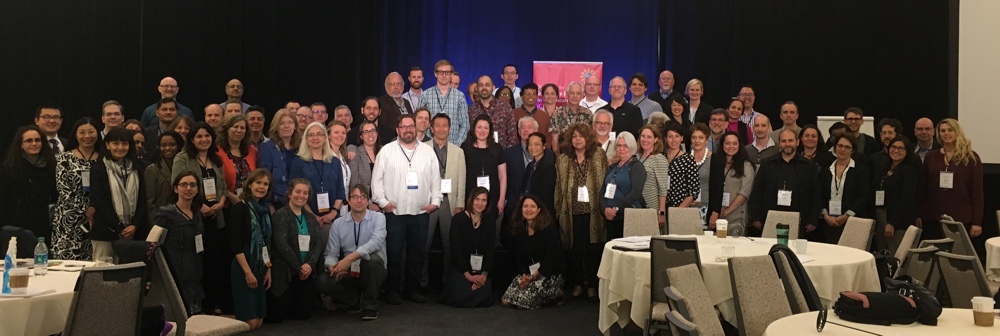Our Center for Innovative Research in Cyberlearning (CIRCL) recently hosted the fifth Cyberlearning meeting on April 17-19 2017 in Arlington, VA. One powerful theme that emerged from the meeting was “learning with feeling” — how to design technology-rich learning experiences to foster deep learning through emotional and affective engagement.
A first pair of keynote speakers set the tone. In her talk Why Emotions are Integral to Learning: A Neuroscience Perspective, Mary Helen Immordino-Yang highlighted how neuroscience research reveals strong connections between emotion and learning, particularly around emotions that involve relationships, empathy, and involvement in human-centered narrative. She contrasted the potential of these emotions with earlier views of emotion that influenced learning technology, such as a focus on arousing interest or providing rewards. Jeremy Bailenson’s talk, Experience on Demand: The Opportunities (and Costs) of Learning in VR, emphasized how virtual reality technologies cultivate a unique sense of presence, of embodied cognition, and of empathy. He showed how emotional experiences can be recruited to deepen STEM learning, for example, in an experience about ocean acidification. Connecting new advances in neuroscience with rapidly emerging technologies points to the central strength of the cyberlearning research; Cyberlearning research pushes for deeper understanding of how people learn through advancing technologies.
Building on the keynotes, the unique meeting agenda guided approximately 200 researchers and educators through a rapid-fire set of experiences to enable them to work together to advance learning with technology. The attendees, most of whom have National Science Foundation funding, shared their own research in roundtables and engaged in speed networking to form connections across the different scientific disciplines represented at the meeting. The scientists held “expertise exchanges” to educate each other about the many areas of specialized knowledge needed for cyberlearning innovation. Afternoon working sessions challenged cross-cutting teams of participants to “think big” beyond the bounds of their own research and use the opportunity to design the future of learning to tackle enduring and important challenges — like challenges of equity, of empowering people through interactions with computers, and of developing smart and connected communities.
On the second day of the meeting, a session inspired by the popular “shark tank” television series gave four scientific teams an opportunity to pitch visions for the future of learning with technology. A panel of experts and the audience each voted on how they would “invest” in particular futures. Although all four presentations were judged to offer significant value, the pitch on Mobile Augmented Reality Games: Immersive Learning ARIS (Augmented Reality and Interactive Storytelling) won both the panelist and popular votes. This pitch was strongly aligned with the “learning with feeling” theme evoked by both keynote speakers. It featured a narrative-based mobile game development platform called Experiences using ARIS that invites researchers, educators and learners to become designers of augmented reality learning experiences through “StoryCoding,” a storytelling approach to programming that supports computational thinking, and “Holographic Learning Experiences” that draw on technology similar to the HoloLens to create immersive experiences.
Through technology demonstrations and poster sessions, attendees shared other aspects of what “learning with feeling” means to cyberlearning researchers. Important aspects included:
- organizing the design process around greater empathy for the needs and strengths of diverse learners.
- engaging tactile and bodily feeling as a sense that drives learning, along with eyes and ears — by using todays affordances to sense motion, parse gestures, and use forms of touch input.
- understanding how learning builds successful STEM identities for students by connecting to students sense of wonder, of amazement with the natural work, and of a sense of purpose.
- developing new ways to work with richer streams of data — video, audio, and sensing technologies — to better study how people learn in technology-rich environments.
A second pair of keynotes articulated the challenges that will need to be addressed to advance a vision of learning with feeling. Eileen Scanlon, a leading UK scholar on advanced educational technology, spoke to the audience about how important multidisciplinary scientific teamwork is. But she also shared her experience with how challenging it is to do successful teamwork and achieve “convergent science” — science that deeply pulls different fields and disciplines together. Her talk gave those present a sharper sense of not only the future of learning, but how their own forms of engagement in research would have to change to get there.
Then Karthik Ramani shared an exciting vision of the role of engineering in driving advances both in learning and in “computational fabrication.” In his vision, there are problems that lie at the intersection of learning and of cutting edge engineering challenges. These are problems of how to support more effective human interaction with technologies like robots and 3D printing gear, along with related problems of how to support design processes that are more humanistic. The humanistic, design-centered vision drives requirements for a next generation of more sophisticated engineering tools. Karthik’s work, importantly, also featured how to educate a next generation to become active in cutting-edge design work that leverages new modes and materials for design.
Although the theme of “learning with feeling” was strongly present at Cyberlearning ’17, the work shared at the meeting covered a considerable range, beyond what any single theme can adequately capture. Central commitments to equity, to advancing the science of learning, and to designing for the future of technology were present throughout.
The keynotes, conference program, and Storify of tweets during the event can be viewed on the Cyberlearning 2017 page on the CIRCL website. To become informed of CIRCL events and publications, sign up for the CIRCL Newsletter.
CIRCL is supported by the National Science Foundation under grants IIS-1233722, IIS-1441631, and IIS-1556486. All opinions are our own and may not represent the views of the NSF.

